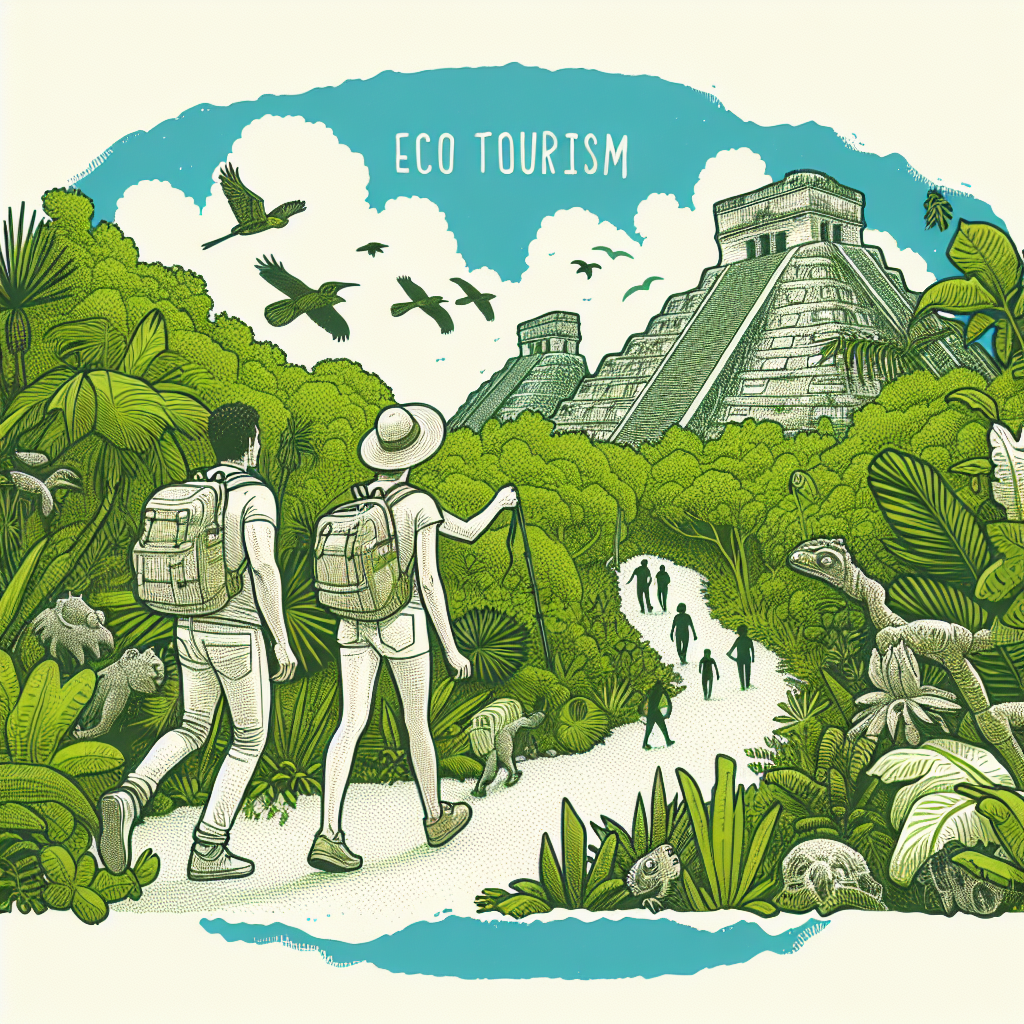Understanding Tulum’s Jungle Environment
Tulum is renowned for its stunning beaches and Mayan ruins, yet just beyond the coast lies an intricate jungle ecosystem teeming with life. This landscape comprises diverse flora and fauna, offering eco-tourists unique experiences. However, navigating Tulum’s jungle requires knowledge and preparation to ensure a safe and enjoyable adventure.
Essential Gear for Jungle Exploration
-
Footwear: Opt for sturdy, waterproof hiking boots or shoes with gripping soles. This protects your feet from uneven terrain, muddy paths, and unexpected encounters with wildlife. Avoid flip-flops or open-toed sandals.
-
Clothing: Wear lightweight, breathable, long-sleeve shirts and pants to protect against sun exposure and insect bites. Light colors are preferable as they reflect heat and are less attractive to insects.
-
Insect Repellent: A good-quality insect repellent containing DEET or natural alternatives like lemon eucalyptus oil can prevent mosquito and tick bites. Apply it generously on exposed skin before venturing into the jungle.
-
First Aid Kit: Carry a basic first aid kit equipped with antiseptic wipes, band-aids, antihistamines for allergic reactions, and bite relief ointment. Familiarize yourself with how to treat cuts and scrapes that could occur from thorny plants.
- Water and Snacks: Staying hydrated is key. Pack a refillable water bottle and snacks such as granola bars or nuts to keep your energy levels up during hikes.
Understanding Wildlife Encounters
The Tulum jungle is home to various species, including howler monkeys, jaguars, countless bird species, and reptiles. While encounters can be thrilling, it’s essential to practice wildlife safety:
-
Distance: Maintain a respectful distance from all wildlife. Never attempt to feed or touch animals, as they may react unpredictably.
-
Noise Level: Keep chatter to a minimum to avoid startling animals. A quiet approach allows for observing wildlife without disturbing their natural behavior.
- Group Size: Traveling in larger groups can deter potentially dangerous wildlife encounters. Predatory animals are less likely to approach a larger collective.
Navigational Safety
-
Trail Maps and Guides: Consider hiring a local guide who knows the terrain and can offer insight into wildlife and plant life. Alternatively, ensure you have a detailed map or download offline maps on your phone.
-
Stay on Designated Paths: Straying from marked trails can lead to injuries or getting lost. Stick to well-trodden paths to maintain your safety and protect the ecosystem.
-
Sun Protection: The jungle can be dense, but sun exposure is still a concern. Use sunscreen on exposed skin, and wear a wide-brimmed hat to shield your face and neck.
- Time of Day: Daylight hours are ideal for exploring. If night hiking is unavoidable, bring headlamps or flashlights, and be cautious of nocturnal wildlife.
Dealing with Weather Conditions
Tulum’s jungle environment can be susceptible to sudden weather changes. Here’s how to navigate these conditions:
-
Rain Gear: Always check the weather forecast and carry a lightweight poncho or raincoat. Sudden downpours can turn trails slippery and hazardous.
-
Humidity Preparations: The jungle tends to be humid, which can affect comfort levels. Ensure you wear moisture-wicking fabric and stay well-hydrated.
- Avoiding Flash Flooding: During the rainy season, stay clear of low-lying areas where water may accumulate. Be wary of swollen rivers and streams.
Connecting with the Local Community
Engaging with local communities not only enriches your experience but also supports eco-tourism:
-
Cultural Sensitivity: Be respectful of local customs and traditions. Learning a few Spanish phrases can enhance interactions and show your respect for the culture.
-
Supporting Local Businesses: Purchase handmade crafts from local artisans or dine at locally-owned restaurants. This boosts the economy and encourages sustainable practices.
- Participating in Eco-Friendly Activities: Join eco-tours that prioritize environmental conservation. Activities such as snorkeling, cenote swimming, or bird watching guided by local experts can promote awareness and preservation of the ecosystem.
Staying Safe from Natural Hazards
Tulum’s jungle is home to natural hazards that require awareness:
-
Poisonous Plants: Familiarize yourself with local flora that can cause rashes or allergic reactions such as poison ivy or specific ferns. Avoid touching unknown plants.
-
Snakes: Although snake bites are uncommon, being aware of your surroundings can minimize potential risks. Watch where you step and avoid tall grass areas.
- Rugged Terrain: The jungle floor can be uneven, with roots, rocks, and mud. Watch your footing to prevent trips and falls.
Emergency Preparedness
Despite all precautions, emergencies can happen:
-
Know Emergency Numbers: Familiarize yourself with local emergency contacts or the nearest hospital location. Keep a list of emergency numbers saved on your phone.
-
Share Your Itinerary: Inform friends or family of your planned route and expected return time. This information can be vital in an emergency.
- Cell Phone Coverage: Be aware that some parts of the jungle may have limited cell service. Download maps and information beforehand, and consider carrying a portable charger.
Environmental Conservation Practices
Respecting the environment is crucial during jungle explorations:
-
Leave No Trace: Adhere to principles of “Leave No Trace.” Pack out all trash and avoid leaving any items behind.
-
Avoid Feeding Wildlife: Feeding animals alters their natural foraging habits and can lead to dependence on human food.
- Stick to Eco-Friendly Products: When traveling, use biodegradable soaps and shampoos. This minimizes your ecological footprint and protects the local wildlife.
Conclusion
Tulum’s jungles offer an exhilarating journey filled with discovery. By preparing adequately, understanding the ecosystem, and practicing safe explorations, eco-tourists can enjoy the beauty of Tulum while ensuring their safety and preserving the environment.







